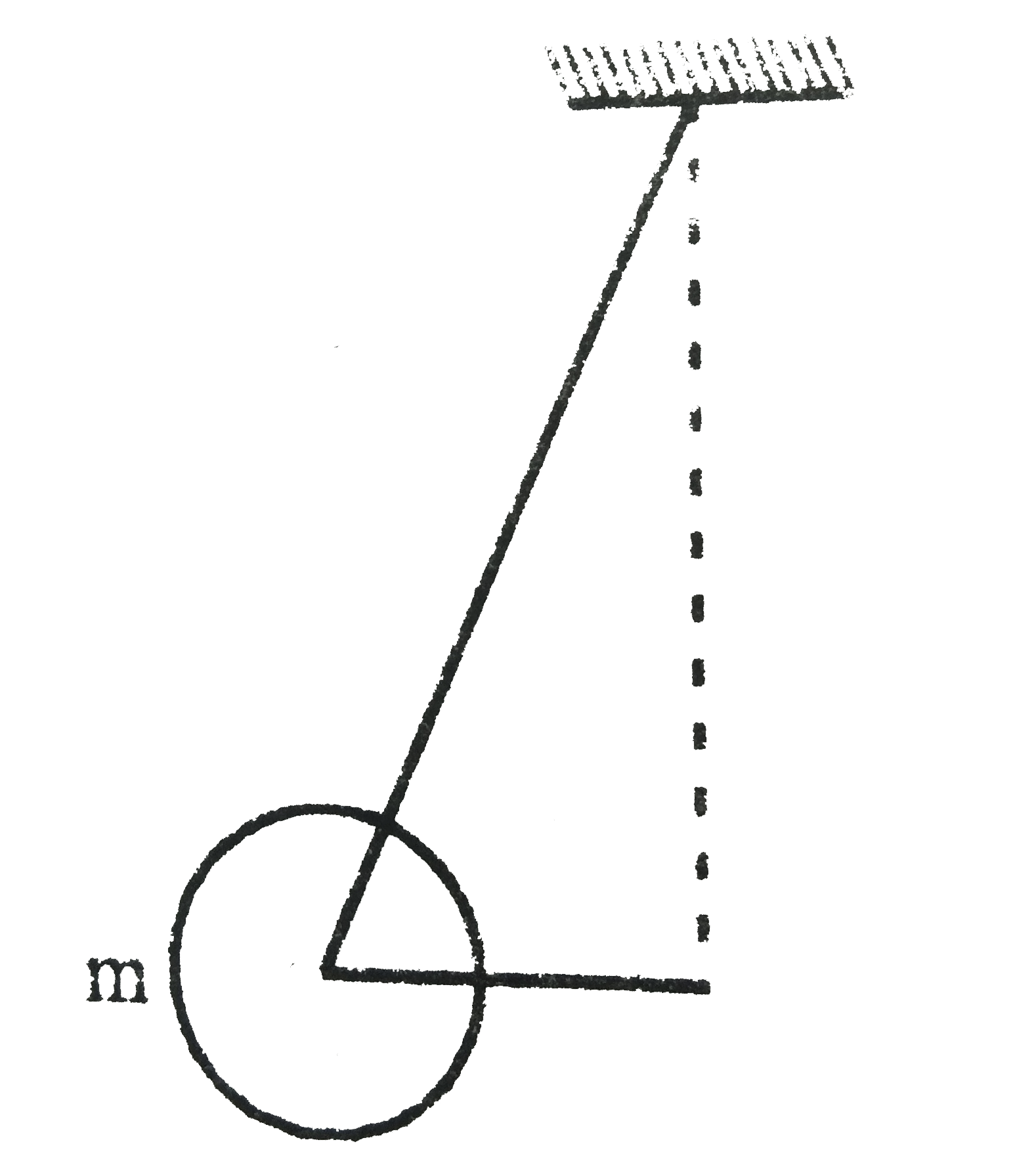It is known that the time of revolution T of a satellite around the earth depends on the universal gravitational constant G, the mass of the earth M, the radius of the circular orbit R. Obtain an expression for T using dimensional analysis. Solution in Gujrati
We have [T]=[G]∘[M]∘[R]∘
[M]0[L]0[T]1=[M]−a[L]3a[T]−2a×[M]b−a[L]c+3a[T]−2a
Comparing the exponents
For [T]:1=−2a⇒a=−12 For [M]:0−b−a⇒b=a=−12
For [L]:0=c+3a⇒c=−3a=32
Putting the values we get T∝G−1/2M−1/2R3/2∝√R3GM
The actual expression is T=2π√R3GM
Topper's Solved these Questions
- BASIC MATHSBOOK - ALLEN CHAPTER - BASIC MATHSEXERCISE - ERRORS IN MEASURMENTS
20 Videos
- BASIC MATHSBOOK - ALLEN CHAPTER - BASIC MATHSEXERCISE - Question
1 Videos
- BASIC MATHSBOOK - ALLEN CHAPTER - BASIC MATHSEXERCISE - EXERCISE-3
20 Videos
- AIIMS 2019BOOK - ALLEN CHAPTER - AIIMS 2019EXERCISE - PHYSICS
39 Videos
- CIRCULAR MOTIONBOOK - ALLEN CHAPTER - CIRCULAR MOTIONEXERCISE - EXERCISE (J-A)
6 Videos
Similar Questions
Find the dimensional formula of strain.
View SolutionFind dydx for the following :
(i) y=x7/2 (ii) y=x−3
(iii)y=x (iv) y=x5+x3+4x1/2+7
(v) y=5x4+6x3/2+9x (vi) y=ax2+bx+C
(Vii)y=3x^(5)-3x-1/x
View SolutionAssertion: If the initial and final positions coincide, the displacement is a null vector.
Reason: A physical quantity can not be called a vector, if its magnitude is zero.
View SolutionA simple pendulum executing SHM in a straight line has zero velocity at 'A' and 'B' whose distances form 'O' in the same line OAB are 'a' and 'b'. If the velocity half wat between them is 'v' then its time period is
View SolutionA ball of mass (m)0.5kg is attached to the end of a string having length (L)0.5m. The ball is rotated on a horizontal circular path about vertical axis. The maximum tension that the string can bear is 324N. The maximum possible value of angular velocity of ball (radian/s) is -
 .
.
View SolutionThe speed v of a satellite moving in a circular orbit around the earth depends on the gravitational constant G, mass of the earth me and radius of circular orbit r. Estabish the relation using dimensions.
View SolutionIt is known that the time of revolution T of a satelite around the earth depends on the universal gravitational constant G, the mass of the earth M, and the radius of the circular orbit R. Obtain an expression for T using dimensional analysis.
View SolutionA satellite whose mass is M , is revolving in circular orbit of radius r around the earth. Time of revolution of satellite is
View SolutionA satellite is revolving in circular orbit of radius r around the earth of mass M. Time of revolution of satellite is
View SolutionA satellite of mass is in a stable circular orbit around the earth at an altitude of about 100 km. If M is the mass of the earth, R its radius and g the acceleration due to gravity, then the time period T of the revolution of the satellite is
View SolutionAn artificial satellite is revolving around the earth in a circular orbit of radius r. If the time period of revolution of the satellite is T, show that T^2 prop r^3 .
View Solutionपृथ्वी के चारों ओर परिक्रमा करने वाले उपग्रह का परिभ्रमण काल T, गुरूत्वाकर्षण के सार्वत्रिक नियतांक G, पृथ्वी के द्रव्यमान M तथा वृत्ताकार कक्षा की त्रिज्या R पर निर्भर करता है T के लिये सूत्र व्युत्पन्न कीजिये।
View SolutionAn artificial,satellite of mass .m. is revolving around the earth, in a circular orbit of radius .r.. If the mass of the earth is.m. angular momentum of the satellite with respect to the centre of earth is (G-universal gravitational constant):
View SolutionAn artificial satellite of mass 'm' is revolving around the earth, in a circular orbit of radius 'r'. If the mass of the earth is 'm' angular momentum of the satellite with respect to the centre of earth is (G-universal gravitational constant)
View SolutionAn artificial satellite of mass 'm' is revolving around the earth, in a circular orbit of radius 'r'. If the mass of the earth is 'm' angular momentum of the satellite with respect to the centre of earth is (G= universal gravitational constant)
View SolutionAn artificial satellite of mass 'm' is revolving around the earth, in a circular orbit of radius 'r'. If the mass of the earth is 'm' angular momentum of the satellite with respect to the centre of earth is (G-universal gravitational constant)
View Solution
